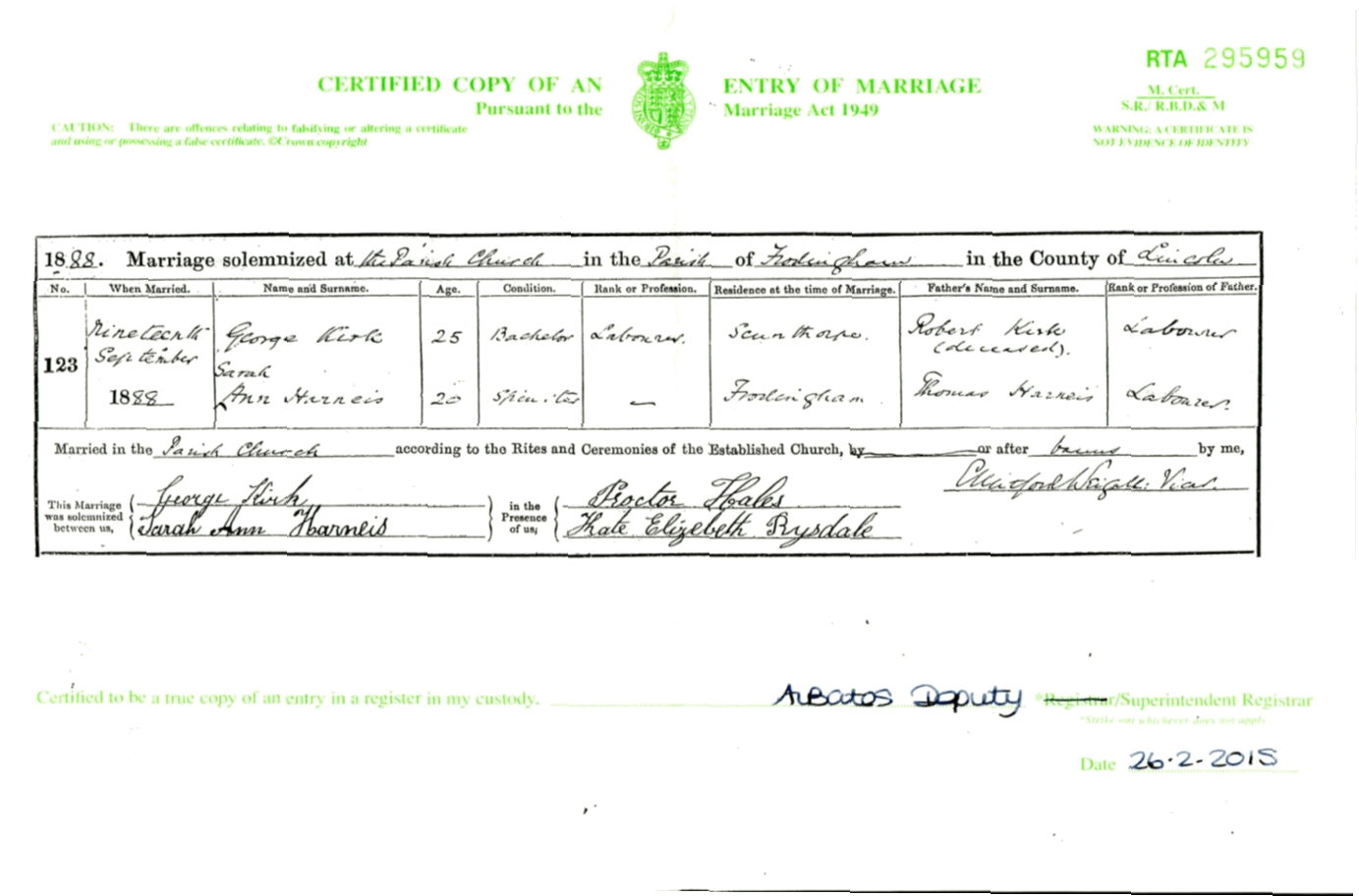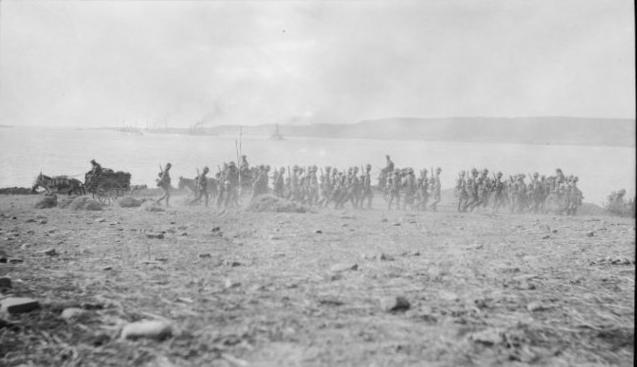John William Kirk

JOHN WILLIAM KIRK
John William Kirk was born on the 15th of May 1894. His parents were George and Sarah Ann. Sarah Ann’s maiden name was Harneis and she and George were married at St. Lawrence’s Church on the 19th of September 1888.
We have been fortunate enough to obtain copies of the relevant certificates for John William’s birth and for the marriage of his parents. We have also been able to find the entry in the 1901 census return for Frodingham which is where they lived after they were first married. Copies of these documents are printed below although the page from the census return is not at all clear. It shows that Sarah Ann was born in Yorkshire but the precise location is a complete mystery, no doubt due to the enumerator’s rather poor handwriting and lack of knowledge of locations in “foreign parts”.



The census shows them living at 2nd North Street in Frodingham. This is now William Street and thanks to the sensitive way that Scunthorpe Borough Council preserved and modernised these dwellings which date from time when the first iron works were established in the town we can get a very good idea of what they must have looked like in the 1870’s. This whole area of Frodingham was very forward looking for its time and included not only decent housing for the iron workers and their families but also a school and a cottage hospital.

William Street in 2015. (Probably not a lot different to 1911, from the outside at least.)
The Kirk family must have felt that they were indeed fortunate to have not just a permanent income but a pleasant and growing community in which to bring up their young family.
Unfortunately tragedy struck this young family when Sarah Ann died after giving birth to another son, Charles, in 1899. This must have been devastating for George to lose his wife and newborn child as it must also have been for the John William aged just five to lose his mother.

We don’t know exactly when, but some time after this George and his two young children moved to Ashby, to live at 34 Victoria Road. This is the address given for John William’s parents on his war records and it is worth noting that Sarah Ann is included despite having died some sixteen years earlier than her son John William. It is fairly safe to assume that it must have been while George and his two surviving children were living here that John Williiam attended Ashby Wesley Sunday School.
The Kirk family seem to disappear from the census records of 1911 and we have not been able to establish what became of John William between the time when he was shown as living in Frodingham and the time when he enlisted. We know that John William listed his father as his next of kin and after his death George recieved, on the 17th of November 1915, the princely sum of £3: 8s: 4d which was back pay owing to his son. On the 14th of July 1919 he recieved the statutary £3 bounty paid to the surviving families of all servicemen killed during the course of the war. Little details like this give us a snapshot of the cruel way in which ordinary families of our little town of Ashby suffered in so many ways, not just through the loss of their loved ones but from the pitifully small value placed on their lives.
George eventually died in the summer of 1936, aged just 60.
Military Service
John William Kirk served in the 6th battalion of the Yorkshire regiment, also known as the Green Howards. Based in Richmond, this battalion was formed in 1914 as part of Kitchener’s recruitment drive at the outbreak of war. He enlisted at Middlesbrough some time after the 15th of July, probably in response to the call to arms. How he came to be in Middlesbrough is not known and the lack of census returns for him has made it impossible for us to discover any link with the area. The 6th battalion came under the orders of the 32nd Brigade of the 11th (Northern) Division and in April 1915 moved to Witley Camp in Surrey to prepare for departure overseas. The 11th Division left Liverpool on HMS Aquitania on 3rd July 1915 bound for Suvla Bay, near the Gallipoli Peninsula where they arrived on 6th August with a strength of 25 officers and 750 other ranks.

British WWI troops at Suvla Bay, Gallipoli, Turkey. Negatives taken by Rev Ernest Northcroft Merrington, all relating to World War 1, chiefly Gallipoli. Ref: 1/2-077915-F. Alexander Turnbull Library, Wellington, New Zealand. http://natlib.govt.nz/records/23167229
We have not found any war diaries specifically for the Green Howards but there are many accounts of the fighting at Gallipoli which suggest that the events of July and August were particularly catastrophic, resulting in huge casualties. The assault on Lala Baba (a relatively small Turkish outpost) on 6th and 7th August 1915 was described in “Official History of the Great War” as the first made by any unit of the new army. 16 officers and 250 other ranks fell on the first day under heavy enemy fire. Although Lala Baba was successfully taken, the Green Howards had been on their feet for over 17 hours and in the confusion, with little command structure left, awaited further orders, leaving themselves vulnerable to attack, the element of surprise having been lost. Further casualties soon followed.
Those who were not killed outright were where possible evacuated to hospital ships which had protected status under the Geneva convention, and sent to the (relatively) nearby Greek islands such as Imbros and Lemnos for further attention. While on board they were nursed by members of Queen Alexandra's Royal Naval Nursing Service and given the best treatment that could be carried out under such difficult conditions. Once disembarked away from enemy territory, further treatment could be given and a decision made as to whether a soldier could return to the front line, needed to convalesce locally for a short time or needed to return home. The Aquitania itself became a hospital ship following the August arrival at Gallipoli.

HMHS Aquitania, 1915
It is not known which ship John William Kirk ended up being evacuated on but records show that he died at sea from wounds on 10th August 1915, just four days after arrival at Suvla Bay. In accordance with the custom of the time he would have been buried at sea, with a simple service by the ship’s chaplain. He is commemorated on Helles memorial on the Gallipoli peninsula along with 21,000 others, many of whom who have no known resting place.
The Helles memorial.

